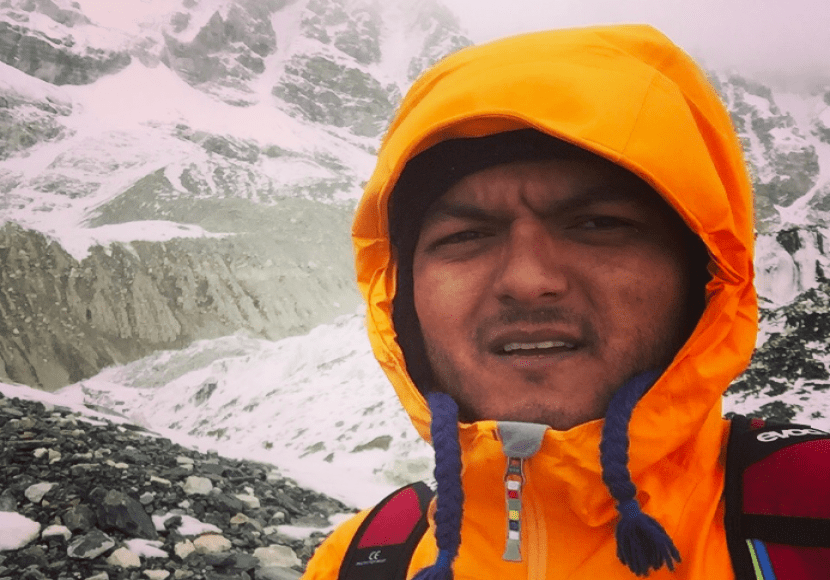May 4, 2015
By Mandil Pradhan, lead guide of our Treasures of the Himalaya Ride in Nepal

As you all know already, a massive earthquake M 7.9 ripped through my country Nepal a little over a week ago. Although my immediate family and I are safe, many others were not as fortunate. I am also very relieved to inform you that all of our local staff are safe and accounted for. Some have lost their homes and are staying in temporary locations, but most importantly, they are safe. The beautiful Mustang, where we operate a good portion of our Rides, is one of the least affected areas of the country and only minor damages have been reported.
While the official death toll currently stands at 7,000, with more than 15,000 injured, it is believed these numbers will increase significantly over the coming weeks as more of the missing are accounted for and more remote regions accessed. A large earthquake had been expected for years, yet neither the government nor the majority of the population was prepared for the impending disaster. We had received warnings about the possibility of an earthquake in this region for a number of years now, but a majority of my the people here, including those in government were not prepared at all for a disaster of this magnitude that would rip through the heart of my country. Hundreds of thousands of homes have been destroyed and thousands of people are left homeless. Luckily, the earthquake hit on a Saturday when most people, including school children, were home. I shudder to think how much more damage would have been inflicted had it not been the weekend!
In addition to the massive loss of lives, health, and property, we also lost a significant portion of our heritage sites last Saturday. The historic medieval town of Bhaktapur, which was believed to have more temples than houses, has been severely destroyed while the ancient palace complexes of Kathmandu, Patan and Nuwakot have also been heavily damaged (see drone footage of the devastation here). Our very identity has taken a hit.
However, it’s not all gloom and doom here in the Himalayas and there have been many heart warming stories of inspiration, survival and solidarity. Foreign governments, volunteers, medical teams and donors have come out in force to help the people of Nepal. Our security forces, with their limited skills and resources, have come to the front and have been conducting rescue and relief missions all over the country. Even a week after the quake, stories of people rescued from under the rubbles continue to provide hope in this time of great crisis. Citizens with standing houses have welcomed their neighbors into their homes, and people from the cities have driven in numbers to provide relief support to the less fortunate.

My fellow guides, Rajesh and Suraj, along with other local mountain bikers have been scouting remote villages around Kathmandu Valley on their mountain bikes and reporting the scale of damage to the emergency services. Even though these villages are in short distances of Kathmandu, they don’t have proper road access and helicopters are in very short supply in Kathmandu at the moment. Hence, their mobility on bicycles has turned out to be incredibly useful. In addition, the drivers of our bike cargo truck, Rabi and Babu, have been using the trucks to transport relief materials (consisting mainly of tents, food, water, and medicines) to villages near and far.
As for myself, I spent the first few days after the quake to drive a team of Turkish Search & Rescue volunteers to the epicenter of the quake in Gorkha village — about 7 hours away from Kathmandu. Then I travelled to Everest Base Camp, the site of an avalanche that killed 25 people, with a news crew in order to maximize international awareness of the disaster that has befallen our country. In the process, we were also able to rescue 3 Japanese hikers who had been stranded in Pheriche (4,100meters) for 4 days.
As the initial wave of media coverage dies, crowd sourced fundraising campaigns slow down, and people settle into their temporary tarpaulin homes, we need to start looking at a longer term solution that will help people return to their permanent homes as quickly as possible. Monsoon hasn’t arrived yet, and the dirt roads are still navigable, but it will start raining soon. The urgency to rebuild is real. We need to start as soon as possible.
Reputed international aid organizations such as Red Cross, Oxfam, International Medical Corps, UNICEF and Save the Children have strong ongoing relief efforts here and are accepting tax-deductible donations. I urge you to pick an organization of your choice and donate whatever you can to help the people of Nepal. Here is some information on the things you need to know before you donate to Nepal (or any other future causes): http://distractify.com/beth-buczynski/things-to-know-before-you-donate-to-nepal/.
Please spread awareness by sharing this post.
